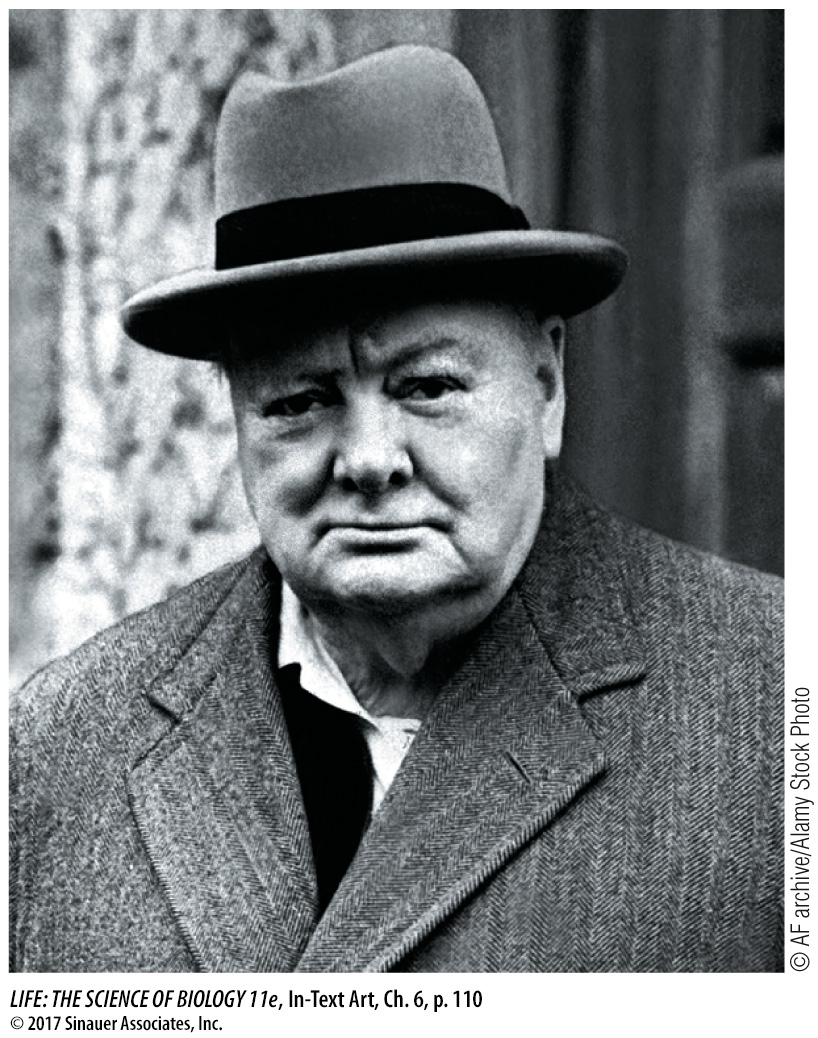Chapter Introduction
110
6
key concepts
6.1
Biological Membranes Are Lipid–Protein Bilayers
6.2
The Cell Membrane Is Important in Cell Adhesion and Recognition
6.3
Substances Can Cross Membranes by Passive Processes
6.4
Active Transport across Membranes Requires Energy
6.5
Large Molecules Enter and Leave a Cell through Vesicles
Cell Membranes

investigating life
Sweating and Membranes
During World War II, Winston Churchill told the British Parliament, “I have nothing to offer but blood, toil, tears and sweat.” He may not have known that the last two, tears and sweat, are transported across cell membranes inside vesicles. As you saw in Chapter 2, sweating is a way to reduce body heat by using excess heat to evaporate water. At peak activity, we may lose as much as 2 liters of water an hour, and if you know about the German air attacks on London during the war, you know that the people indeed toiled hard and must have sweated a lot.
The sweat glands lie just below the surface of the skin. They are essentially cell-

A hallmark of living cells is the ability to regulate what enters and leaves the cytoplasm. This is a function of the cell membrane, a hydrophobic lipid bilayer with associated proteins. Because it is insoluble in the aqueous environment both inside and outside cells, the membrane is a physical barrier. But it is also a functional barrier. Whereas water is polar, the interior of the membrane is nonpolar—
Vesicles are not the only way to get polar water across a nonpolar membrane. In the mammalian kidney, and in plant roots, stems, and leaves, special pores called aquaporins occur in the cell membrane. Water can flow through them readily because the proteins lining the channel have a hydrophilic inner surface.
What is the importance of aquaporin membrane channels?